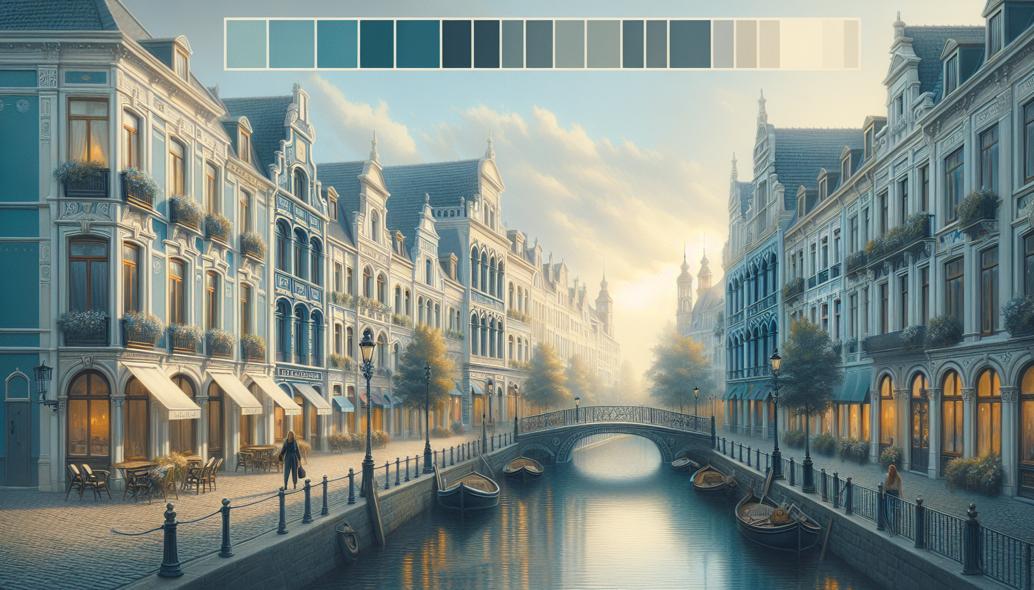The Psychological Impact of Frame Choices on Artwork Perception
Discover how frame choices can transform artwork perception, influencing emotions and interpretations. Dive into the subtle art of color, style, and thickness to enhance art's impact and captivate viewers.

The Psychological Impact of Frame Choices on Artwork Perception
When we consider the presentation of art, we often focus on the work itself—the colors, textures, and the emotions it evokes. However, the frame surrounding a piece can significantly alter how art is perceived by viewers. Frames do more than just protect and display; they play an integral role in aesthetic perception, subtly shaping our interpretations and emotional responses. This blog post explores the psychological impact of frame choices on artwork perception, focusing on the critical aspects of color, style, and thickness.
Art Perception: Beyond the Canvas
Art perception is a complex interaction between the observer and the artwork. It is affected by numerous factors, including the viewer’s personal experiences, cultural context, and environmental setting. One often-overlooked component of this context is the frame. Frames can guide the eye, establish a mood, and even influence the perceived value of the artwork.
Various psychological studies have shown that the frame can attract as much attention as the art itself, impacting the initial attraction and subsequent interpretation of the artwork. The success of this interaction lies within the frame’s ability to either harmonize with the art or create a compelling contrast that highlights particular aspects of the piece.
Frame Psychology: The Power of Color
Color is one of the most powerful tools in a frame’s arsenal, wielding the ability to transform perception dramatically. The psychology of color in framing is about balancing hues between the artwork and its frame to engender the desired emotional impact.
1. Color Harmony and Contrast: When a frame's color harmonizes with that of the artwork, it can create a seamless transition that allows the viewer’s focus to remain on the art itself, while a contrasting color in the frame might help emphasize certain elements within the piece. For instance, a black frame around a vibrant, colorful painting can draw attention to its boldness, accentuating contrasts within the artwork without overshadowing it.
2. Cultural and Symbolic Meanings: Colors carry cultural and symbolic meanings that can affect viewer perception. A gold frame, for instance, might suggest tradition and value, appropriate for classical or historically significant works, whereas a white frame might lend a more modern or minimalistic feel suitable for contemporary pieces.
3. Emotional Influence: Different colors evoke different emotions. A warm-colored frame, such as red or yellow, might instill energy and warmth, enhancing a lively piece's vibrancy. Conversely, cooler tones like blues and greens could impart a sense of calm, potentially altering the mood of the artwork to reflect these feelings.
Art Presentation: The Role of Style
The style of a frame can dramatically alter the way artwork is perceived in terms of context and period authenticity. Styles can range from rustic and antique to sleek and modern, each carrying its assumptions and influences.
1. Period Consistency: The style can affirm the historical or stylistic period of a piece. A baroque frame may add authenticity to a classical painting, anchoring it within a specific period known for lavishness and detail. Conversely, using an ultra-modern frame for a traditional work might engage the viewer in a dialogue about time, influence, and evolution.
2. Minimalist vs. Ornate: Choosing between minimalist and ornate frames influences viewer focus and artwork interpretation. Minimalist frames often disappear behind the artwork, emphasizing the art’s intrinsic qualities and its context within the placement space. Ornate frames, on the other hand, can elevate simpler works by adding a layer of complexity and intrigue, shaping the perception of the piece as more grandiose or valuable.

3. Stylistic Juxtaposition: Deliberate juxtaposition achieved with stylistic choices can challenge the viewer’s perception, encouraging them to look deeper into underlying themes. A contemporary frame on a classical painting might prompt a reconsideration of timelessness in art, provoking thought on how the artwork continues to hold relevance.
Viewer Experience: The Subtle yet Profound Thickness
The thickness of a frame is often overshadowed by color and style, yet it has a subtle but profound impact on the artwork’s presentation and the viewer’s experience.
1. Depth and Space Perception: A thicker frame can create a significant sense of depth, giving the artwork a three-dimensional presence that can engage viewers spatially, making them feel as though they are peering into a world beyond the frame. Conversely, a thin frame might give the artwork a lighter feel, as if it is floating within its display environment.
2. Focus and Isolation: The thickness of a frame can also influence how focused the viewer remains on the art. A thicker frame can act as a barrier to external distractions, encapsulating and isolating the artwork, which can heighten the viewer’s immersive experience.
3. Contextual Suitability: Depending on the setting, the frame thickness might need to match the intended display environment for cohesion. In a grand gallery setting, a thicker frame might be necessary to balance the scale and prominence, whereas a thinner frame might be more appropriate in a smaller, intimate space.
Practical Considerations: Guidelines for Choosing Frames
The intersection of art and psychology in frame choice underscores the importance of intentional selection in art presentation. Here are some practical guidelines for artists, galleries, and collectors:
- Match the Purpose: Clearly define the purpose of the artwork display. Is it for a personal collection, a public gallery, or for sale? Understanding the intent will direct appropriate frame choices.
- Assess the Artwork: Consider the artwork’s inherent characteristics, like color palette, theme, and style. The chosen frame should either complement or thoughtfully contrast these elements.
- Evaluate the Environment: Look at the artwork’s intended display environment. Ensure the frame aligns with the surrounding decor and lighting conditions, which can further influence art perception.
- Balance Budget and Aesthetics: While budgetary constraints may exist, remember that the frame often adds value to an artwork. Investing in a frame that enhances the art can be financially advantageous and emotionally rewarding.
Conclusion
The psychological impact of frame choices on artwork perception is profound and multifaceted, involving color, style, and thickness. These elements can subtly or significantly alter the viewer's experience and the art’s perceived value. By understanding these dynamics, artists, curators, and art lovers can enhance the ability of art to communicate and captivate, creating a more engaging and meaningful interaction between the viewer and the art. As you choose frames, consider these factors carefully, and remember that while art may be the main attraction, a carefully chosen frame is what completes the picture.
